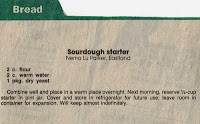Intro
Get Educated
Bikes in General
Bike Stores
Bike Pricing
- $100-200 Department Store Bike
- $400-$500 Looks Like A Bike
- $600-$800 Pretty Good Bike
- $800-$1500 Great Bike
- $1500+ Competition Bike
Over the last year, I've learned loads about bicycles and cycling. Cycling has a lot of benefits: it's good for fitness, it's outdoors and it's also indoors. It can be as flexible as you need in both time and cost investment. Bikes can fit nearly every fitness level, and there's nearly nothing that can't be altered to make cycling enjoyable regardless of physical limitations. You can go gung-ho and get into competitions or you can bike for fun and your own enjoyment. There are so many variations on cycling activities these days: there's something for everyone.
One thing that nearly everyone who has not been a cycle enthusiast before will find out: There's more to a bike these days than 2 wheels, a seat and handle bars. A lot more.
As I've been kickin'-the-tires on this issue, I figured I'd pass on the information for anyone who's interested in checking out cycling as a fun activity.
Before you actually run out and buy a bike, it's helpful to “Get Educated”. Do some homework on what you want to do before you head down to the first place you find that sells bikes and drop a lot of money on a bike that most likely won't work for you, won't do what you want, won't be fun and will end up in the next garage sale.
There are a lot of good websites that have basic information and some bike stores and sporting goods shops have "Cycling 101" courses for free or small fee. REI.com, the big sporting goods chain, has regular classes on cycling: some are free seminars and some are fee-based hands-on learning sessions.
Local bike shops often have a beginner course and a good bike shop will spend time answering all your questions and will not pressure you to buy before you are ready and completely informed about what you are getting. Bike shops do a lot of repeat business and they know that once you start cycling you will be a regular customer. They want you feel comfortable and to come back to them if you have issues or need maintenance/repairs. Good bike shops will invest in you as much as you invest in them.
There are some sharks out there too waiting to gobble up your money and sell you anything, so visit as many shops as you can to look at their inventory, talk to as many bike pros as you can to ask why one bike is different from another, the pros and cons of certain types of bikes and their intended use.
There are over a dozen specialty bike stores near me that are privately owned. There are also the big sporting goods stores and department stores too. The amount of information you get from a department store or from an on-line ordering description may not be enough to make a good decision. Take your time and find an outlet that is more than “cash and carry”.
When I was a kid, I was lucky to have a bike at all. My brother got a 10 speed racing bike, I got a regular bike: the kind with 1 gear that you pedaled backwards to stop (aka: coaster bike). The old coaster bike was heavy, hard to pedal, it was a workout to ride and it wasn't fun. It was transportation but even at that it wasn't very good. I borrowed my brother's 10 speed as often as I could sneak it. It was fast, it was easy to ride and it was fun.
- If you want to cycle; fun wins every time.
- Fitness will follow if it's fun.
- If it's not fun you won't be cycling very long.
- Go for fun. Fun Wins.
There are loads of different kinds of bikes and they all have their specialty uses.
Bikes come in all price ranges and for the most part you will get what you pay for, unless you end up in The Shark Pool. Good bike stores will help you find the best bike for your money if you explain what you want to do with the bike. Good bike stores will have a variety of pricing options that department stores or chain stores won't have. Good bike stores will work with you and not fleece or scam you by over charging or promoting the “push of the day”. Good bike stores want you to come back; return customers are important for them.
However, be mindful that you can spend a lot of money on a bike that won't work for you. You see these bikes listed on re-sale sites by their owners, hoping someone else will come and take it away and hoping to recoup a fraction of the original cost.
Bike price points will vary by the kind of bike, the brand name, the type of store. Bike manufacturers cater to all interest points and they are in business to sell bikes. If you want a Type-Any bike, you will find it. The main problem with the Type-Any bike is that in short order it's not fun, it's gathering dust in the garage and is the first item out in the yard sale. Buying a Type-Any bike isn't a great investment if you want to cycle for more than a few minutes or on a regular basis.
 |
| Hybrid Bike |
 |
| Mountain Bike |
 |
| Road Bike |



